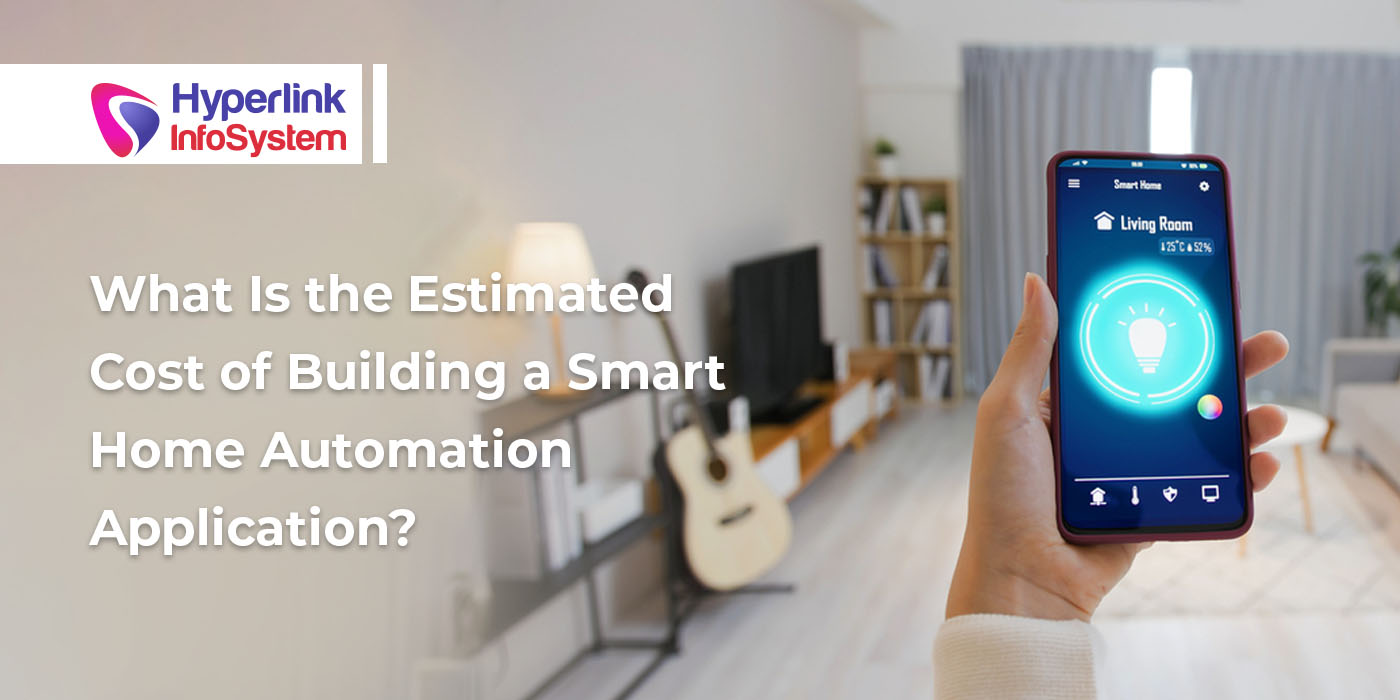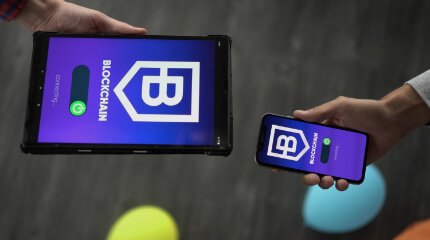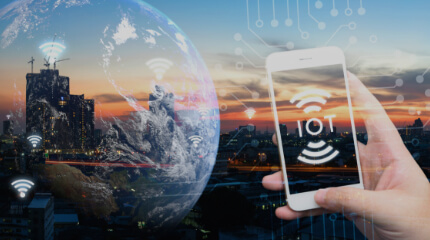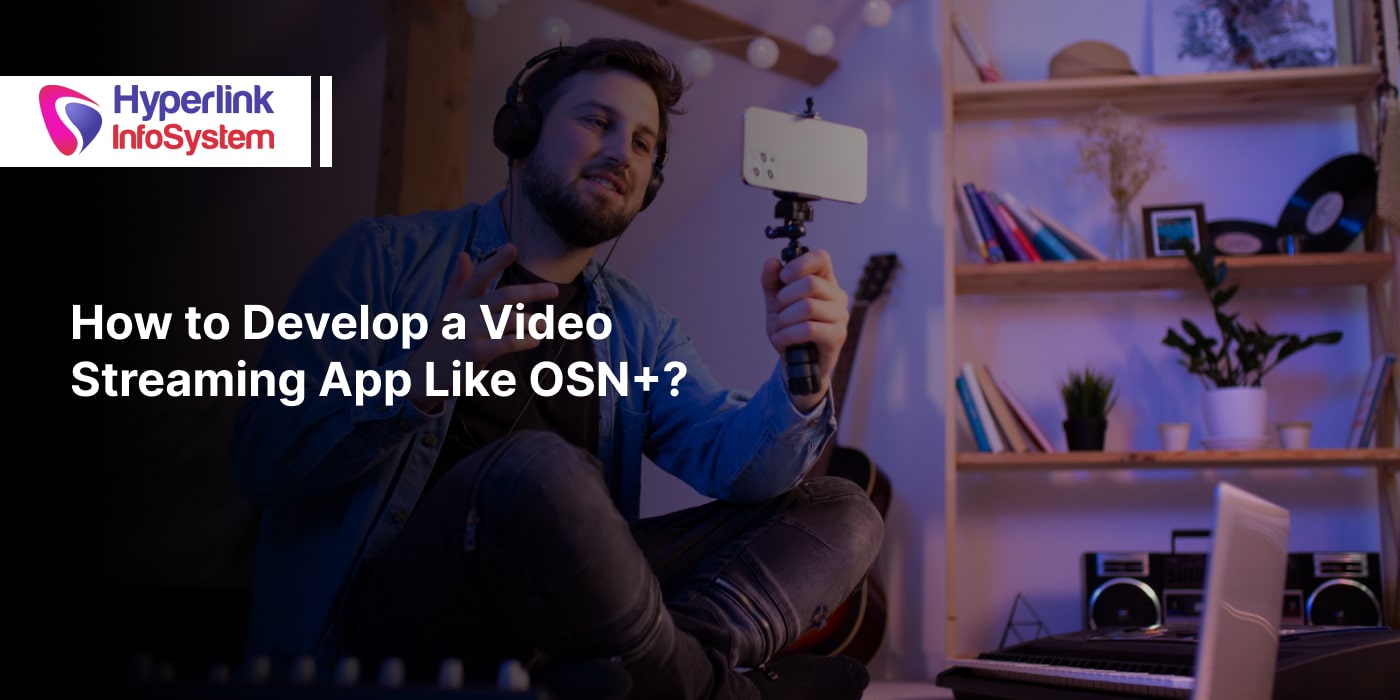We live in a world where Internet of Things (IoT) technology has significantly changed our daily lives, especially our homes. Your TV, refrigerator, toaster, coffee maker, and more are connected to the internet and can send and receive signals from each other. You must think it's amazing, right? It's all made possible by the Internet of Things.
IoT app development and smart home app development are becoming more popular in today's modern and digital era as they improve consumer comfort by automating common household tasks. There are many people whose lifestyles have been completely changed by smart homes. IoT devices are used in "smart homes" to centrally manage home appliances, monitor household activities, and control energy consumption through mobile apps. Consequently, by giving users access to advanced technology, it helps them maintain a sustainable lifestyle.
The objective of IoT app development services is to connect various gadgets to the network system. Then, users of computers, tablets, and smartphones can access the system. As a result, users of various mobile or online applications may simply handle and monitor their daily duties. A similar concept is applied in the automation of smart homes, where programs are developed to offer a centralized smart home environment.
With the use of smart home apps, homeowners can remotely control a number of aspects of their homes, including lighting, temperature, security, and entertainment systems. These applications use the Internet of Things (IoT) to connect devices to create a connected home environment. By enhancing automation, energy savings, and security through customizable user interfaces and advanced capabilities, smart home apps enhance the quality of life.
The number of smart homes is expected to increase and reach 400 million by 2024. Smart speakers are the most prominent market segment, with approximately 171 million devices shipped in 2022. The market size is expected to triple by 2024. Smart appliances, home monitoring and security systems, and video entertainment systems such as smart TVs are some of the other key segments of the smart home market. Smart thermostats, sensors, and intelligent lighting are additional accessories that can be linked to smart home systems. These methods aim to control energy consumption and increase comfort in the home.
With this article, we explore a comprehensive guide on how to
develop a smart home automation application, including key features, opportunities, challenges, factors affecting the cost of building a smart home automation app, and more.
How to Create a Smart Home Automation App?

Now, we will explain how to develop smart home automation applications. Here is the innovative home app development process below:
1) Choose the Automation Solution Types
Create a solution, such as a smart speaker or a set of smart lamps, that only functions with one or a small number of linked devices. These apps can be produced quickly and inexpensively, but marketing them can be difficult. Create a system that enables users to control a wide range of products from diverse manufacturers, improving the user experience and enhancing flexibility. Although creating such an app is more difficult, the benefits are great.
2) Describe Your Development Plan
In the IoT market, there are many pre-built platforms available for smart home app developers. There are four components you require to create an IoT app:
-
IoT Devices
-
A method to monitor firmware updates and apply them to the devices
-
Data analysis from diverse device data
-
The IoT access point for your customers
IoT manufacturers and their platforms already take care of the first two elements of designing an app on a platform.
However, creating something genuinely unique and customized demands substantial time and financial effort. Because it costs time and money to create a specialized solution, your company may fall behind competitors who have already made a name for themselves in the market and invested in advertising.
We advise starting with a pre-built IoT platform and developing at least an MVP on that platform to prevent compatibility, performance, and user experience problems. Before you invest a lot of money in customizing your goods, the market will first be tested.
3) Create a Shortlist of User Scenarios
You can choose which features to add by using user scenarios, or the sequence of actions a user must take to complete a task. User scenarios are frequently created as a result of the business analysis process when a business analyst conducts research and creates user personas.
Why is creating user scenarios required? If you develop user scenarios, the user experience of your app will be personalized to the needs and behaviors of your users. Remember to include a user-centered design strategy in the process of developing your program.
4) Define Key Features of the App
The main elements of your home automation application should be evaluated after choosing the sort of application you want to create.
Arriving prepared with a notion of what the features of your app should be is a smart approach. A mobile app development business will go over the precise parts of your app with you.
Any application you develop for home automation needs to include the following features:
-
Registration
-
Setting Up
-
User Profiles
-
Rooms
-
Scenarios
-
Notifications and alerts
-
Analytics
Apps for home automation also require animations. It's a fantastic strategy for standing out from the crowd. It is easy to develop
smart home apps using the Smart home app development process.
5) Make a Security Plan
Secure IoT networks and current smart home technologies are crucial because smart homes are particularly susceptible to cyberattacks.
If the embedded software isn't properly protected, having a large number of devices connected to one network increases the risk of a hacker breaking in and doing catastrophic harm. You can take the following steps to safeguard any home automation system. Users should be told to switch networks and to change their passwords. Although users are in charge of this, you should firmly advise IoT system users to make use of a different Wi-Fi connection or a different network.
You should regularly update and fix your application. Release updates for your home automation program and do frequent security checks. You should also update all third-party modules and services you use in your smart home application to reduce security flaws and inconsistencies.
Key Features of a Smart Home Automation App

After setting up your control system, it's time to install smart home lighting. That much money saved on energy costs in a big house will quickly cover the cost of the system.
But energy savings are no longer the only advantage of smart lighting. We're not referring to those large, antiquated light switches where each button has a post-it note indicating what to do.
Smart lighting is now all controlled through a single user-friendly gateway, whether it's a single light switch, a single device, or voice recognition. Not to mention that light switches in a smart home are interfaces that control speakers, shades, heaters and much more with the touch of a single button.
The increased security of the automated house goes considerably further than standard home security systems, which only warn authorities in the event of a fire, break-in, or other disasters. To begin with, many smart home monitoring systems can provide signals that can tell welcoming visitors from strangers. The best thing is that a cutting-edge home security system may be completely customized to meet your individual security needs as part of your home automation installation.
-
Smart Home Infrastructure
The smart home automation infrastructure is the primary control of your complete smart home, getting it right the first time is critical. It is the most crucial aspect of future-proofing your home.
A top-notch smart home control system ties everything together flawlessly and lets you operate your entire house using just one remote.
And don't worry if you drop the one control down the sofa. On each of your devices, you can install an app and use that in its place. This is especially useful if you go for the weekend and forget to update your smart home schedule. Just use your go-to app to instruct your devices to take care of the house while you're away.
-
Smart Home Heating and Cooling
Once upon a time, the sole choice for smart climate control was a smart thermostat. You may now control every aspect of your home. You may program temperatures in particular rooms and connect them to your smart home automation systems based on your needs at different times of the day.
You may also use geo-location to activate heating when you are away from home or when you return home. You can even combine smart learning patterns with a smart home tariff if you have solar power.
When your system sells energy back to the grid at the highest cost this automates the process. This alone can significantly reduce your energy expenditures, therefore the expense is worth it.
Imagine you're a visionary with a novel heating system, like ground and air source heat pumps. In that case, you can control these by installing motion sensors throughout your house to monitor the utilization of specific areas. The same is true for underfloor heating, whether it is infrared or a more conventional form. A self-optimizing heating system learns from its experiences and makes appropriate adjustments.
Factors Affecting the Cost of Building Smart Home Automation Applications
Each step in the process of creating a smart home automation application is equally crucial to the one before it. Let's discuss the various stages of app development and the typical costs associated with each.
Doing market research, which involves examining the industry's competition and identifying new trends, is the first step. To make sure you have a strong foundation, you should do some study on the market and your particular sector before acting. Every design choice you make, from the app's basic functions to its UI aesthetics, will be influenced by your knowledge of the sector. Software for smart home automation requires between $50 and $350 in research costs.
The final design of the app will be visualized in wireframes that the developers will create for you. These days, both low- and high-fidelity wireframes are typically included. The time commitment could be between 14 and 140 hours. Generally speaking, you should budget between $2,000 and $10,000.
It's impossible to ignore aesthetics. The designers will create mood boards for you to choose from while taking into mind the particular characteristics of the niche. The customer's feedback will be used to improve the UI mockups and create the finished product. You have a choice between 17 and 210 hours. Additionally, the cost will probably fall between $1000 to $5000.
The
cost of IoT app development depends on the visual representation. The price of adding animation to the website to display loading progress or other procedures that depend on visual cues might range from $1,000 to $30,000. By including this functionality, you may give users a more engaging experience.
It must function flawlessly across all platforms and devices, testing an automation software package entails a lot of moving parts. This suggests that the ultimate cost will be in the range of $3,000 and $10,000. When the prices of all the various stages stated above are combined, the total stockpile of your project can range from $30,000 to $50,000.
You should budget that much for a basic home automation system. Given that studies indicate that 75% of IoT attempts never result in finished, marketable goods, it could prove to be a costly gamble.
Challenges Faced in Building a Home Automation Application
There are many difficulties in creating an IoT home automation application. You could encounter the following challenges when creating IoT applications:
The cost of IoT development can be significant, but by segmenting the process into smaller, easier-to-manage deployments with clear milestones and fees, these costs can be reduced.
IoT app solution companies are very concerned about security lapses and hacks. IoT ecosystems are susceptible to cyberattacks since they only rely on internet access.
There isn't a lot of industry-wide standardization, even though there are many IoT standards under development. Patience is required to overcome this problem as groups like IEEE and The Open Connectivity Foundation attempt to establish a standard IoT language.
-
Post Launch Maintenance and Support
To stay current with emerging trends and technology, IoT App Development Cost needs constant upkeep and assistance. An IoT application must be updated with the newest features and services to remain relevant.
Opportunities of Developing Smart Home Automation App

By developing a smart home automation application, you can capitalize on this growing market and offer your clients a quick and efficient way to manage their houses. Let's examine a few options for developing a smart home app:
Customers may monitor and control their energy use using smart home apps. By providing data on energy usage and enabling automated adjustments, these apps support efforts to save energy and promote sustainability.
-
The Incorporation of Voice Assistants
Integration of smart home automation applications with well-known voice assistants like Amazon Alexa or Google Assistant enables voice-controlled automation. Users may effortlessly control their smart home systems and appliances using voice commands, which raises the accessibility and convenience a notch.
-
Customization and Personalization
Consumers may personalize their living spaces with the aid of smart home apps. They can establish specific scenarios, schedules, and settings for each gadget, which increases comfort and individuality.
To take advantage of these opportunities, it is essential to comprehend consumer needs, prioritize security and privacy, offer a seamless user experience, and stay current with technological developments and market trends. Let's explore the difficulties in creating smart home apps in more detail. Many smart home apps are available, and you can build your own customized smart home automation app. Those looking for smart home app development can contact application development companies that offer world-class
IoT app development services.
Closing Thought
The future of home automation technology is promising, and as more people employ IoT automation solutions in their homes and places of business, the adoption of smart homes will only gain popularity. Any form of IoT system development has a lot of difficulties in terms of user experience, innovation, and security. To create it more quickly and spend less on your home automation marketing strategies, we advise that you outsource the installation of your smart home automation system.
You can transform any home into a smart, networked ecosystem that enables people to simply control their devices and improve their quality of life by working with Hyperlink InfoSystem as your trusted IoT application development services partner. As an IoT app development company, Hyperlink InfoSystem recognizes the value of such an app and has a team of expert smart home app developers who are exceptional at creating durable mobile apps for a range of industry verticals. Our track record demonstrates our extensive expertise in working with a wide range of clients.
Contact our specialists and get a thorough cost estimate for the development of smart home apps.



























